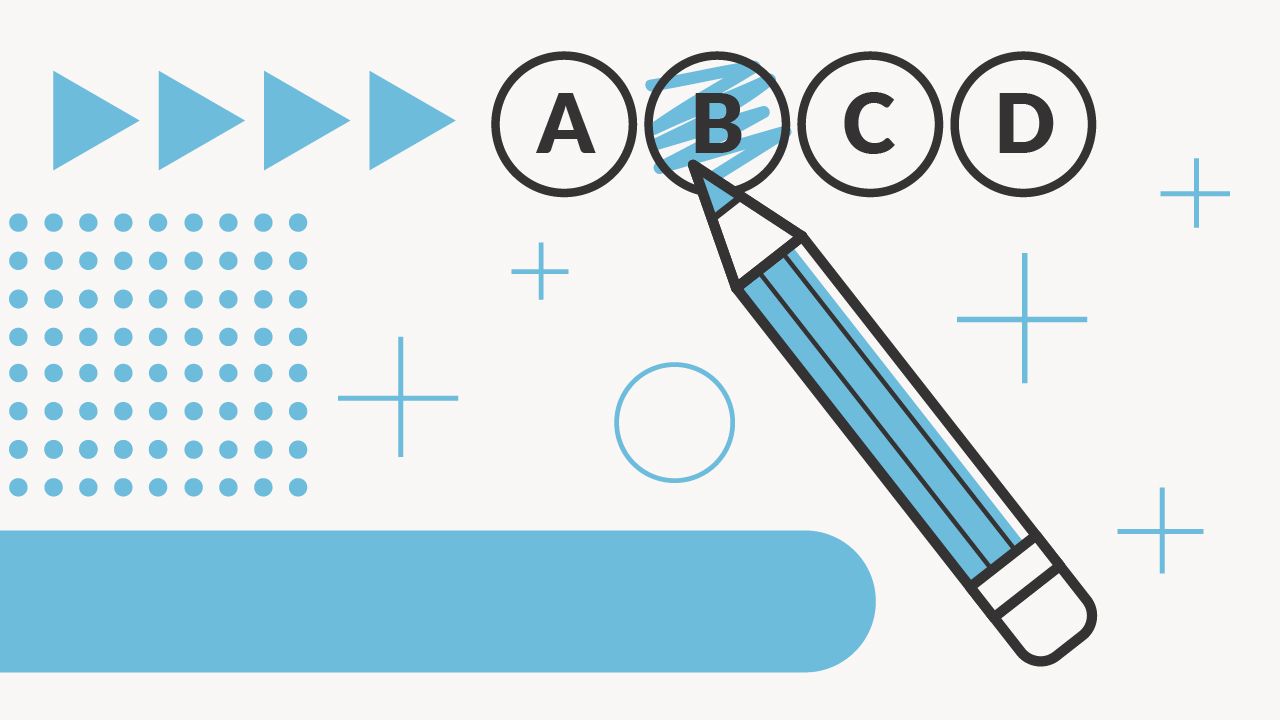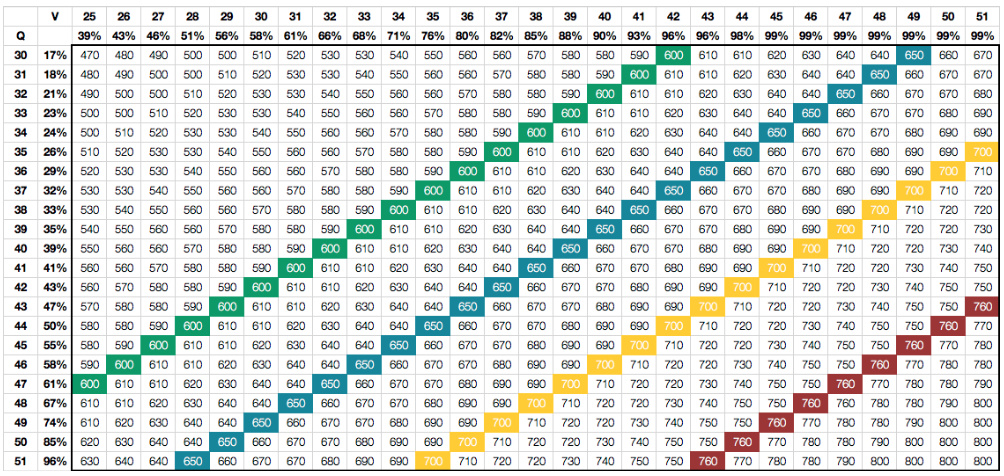
The GMAT, or Graduate Management Admission Test, is a standardized exam used by many graduate schools as part of the admissions process for graduate management programs such as a Masters in Business Administration (MBA) or a Masters in Finance.
Preparing for graduate school is like the Olympic games, except instead of sporting events, you have exam prep, informational interviews, college applications, and a number of other tasks that require strategic planning and mental fortitude. In these games, the only hurdles in your way are the ones known as self-doubt and procrastination.
Luckily, you’ve come to the right place. We’re going to walk through one exam option that prospective graduate schools look for, and we’ll curb those anxieties in no time. Let’s dive into whether this test is right for you, the subjects you’ll be tested on, and what your total score means.
Decoding The GMAT
Taking an admissions test can increase your chances of standing out in a competitive applicant pool, especially when you’re considering a professional graduate degree such as an MBA. The MBA is the most popular graduate degree in the US, with over 250,000 students enrolled as of spring 2022.
The GMAT was created specifically for MBA programs, and more than 2,400 academic institutions accept GMAT scores for admission. As with other standardized college exams, the GMAT helps schools evaluate your professional and academic background in comparison to other applicants. So, what are you tested on and how is it structured?
Test Format
Per the Graduate Management Admission Council, “The GMAT exam is designed to test skills that are highly important to business and management programs. It assesses analytical writing and problem-solving abilities, along with the data sufficiency, logic, and critical reasoning skills that are vital to real-world business and management success.”
At a glance, here’s how the test is structured (not including two optional eight-minute breaks):
Exam Section | Time Limit | Question Count | Score Range |
Quantitative Reasoning | 62 minutes | 31 | 6-51 |
Verbal Reasoning | 62 minutes | 36 | 6-51 |
Integrated Reasoning | 62 minutes | 12 | 1-8 |
Total | 62 minutes | 80 | 200-800 |
The GMAT utilizes a system known as computer adaptive testing. Essentially, the exam varies the order and difficulty level of the questions you are asked in the Quantitative and Verbal Reasoning sections, based on a real-time assessment of your performance on previous questions.
Adaptive testing provides an opportunity to excel in the areas you’re good at, which helps make up for the areas where you struggle.
Also, there is a penalty for leaving exam sections incomplete. Your score decreases with each unanswered question, so it’s best to make an educated guess than to omit questions altogether.
Another unique feature of this exam is the ability to select the section order that works best for you. There are three options to choose from:
Order 1 | Order 2 | Order 3 |
Analytical Writing Assessment | Verbal Reasoning | Quantitative Reasoning |
Integrated Reasoning | Quantitative Reasoning | Verbal Reasoning |
Quantitative Reasoning | Integrated Reasoning | Integrated Reasoning |
Verbal Reasoning | Analytical Writing Assessment | Analytical Writing Assessment |
Quantitative Reasoning
This section determines mathematical competency and numerical literacy by testing your ability to interpret data, reason, and solve problems. Questions in this section cover a combination of problem-solving and data sufficiency, requiring common knowledge of concepts related to algebra, geometry, arithmetic, and word problems.
Verbal Reasoning
The three types of questions in this section relate to reading comprehension, critical reasoning, and sentence structure. You are assessed on your ability to comprehend written material, draw inferences, evaluate arguments, and make corrections in accordance with the standards of written English.
Integrated Reasoning
This section tests your ability to read and interpret data in multiple formats. It is designed to simulate the demands of today’s business world: data synthesis, decision-making, and problem-solving. The four types of questions you’ll encounter are:
- Multi-Source Reasoning: Using data from multiple sources to answer Yes/No and True/False questions.
- Table Analysis: Using a sortable table of numeric data to determine if a set of statements is true or false.
- Graphic Interpretation: Using a chart or graph to find a value to complete fill-in-the-blank statements.
- Two-Part Analysis: Using quantitative or verbal information to weigh trade-offs and make decisions based on more than just one variable.
Analytical Writing Assessment
This section evaluates skills in critical thinking and communication by assessing your ability to analyze a complex argument and produce a logical and well-supported critique in response to it. You are asked to respond to one Analysis of an Argument question, often a topic of common interest related to business or a similar subject. Writing your essay does not require previous business knowledge; rather, your score depends on your ability to think critically about the argument and clearly craft your response to it.
Online Testing
I’ll also note that you can opt to take the exam online, which follows the same test structure. Since the GMAT is a computer-based exam, your unofficial score will be displayed on the screen upon completion, which many may find as a helpful immediate indicator of next steps. You can even schedule an online exam as soon as 24 hours prior to the test time.
Both the online and in-person exam can be taken once every 16 calendar days. Keep in mind, though, that you are limited to five GMAT attempts in a 12-month period and eight attempts overall, regardless of the format you test in.
Scoring
Total GMAT scores range from 200-800, and the Graduate Management Admission Council puts the current average at 582. However, your target school may have an average score that is greater than this. You’ll want to review your school’s website to identify the range of GMAT scores they typically accept into their programs. Generally speaking, a score of 600+ puts your application in an optimal position.
But keep in mind that a “good” GMAT score is the one that fits within the range of scores of your chosen MBA program. Also, two-thirds of GMAT test-takers score between 400 and 800, so chances are good that you will do well, too.
Percentiles
Next to each of your exam scores (four sections plus an overall score) will be your GMAT score percentile, which is another way of comparing your results to other test-takers. Percentiles are calculated annually, using GMAT scores from the previous three years. So, if you see a percentile ranking of 80 next to your Quantitative Reasoning score, it means you scored better than 80% of those who took the GMAT in the last three years.
Here's a table detailing test scores and associated percentiles for the Quantitative and Verbal Reasoning sections:

Read this chart by finding your Verbal score across the top, just below the score will be the percentile of that score. Then find your Quantitative score down the left column, just to the right is the percentile of that score.
To find your total score find the cell where the column and row of your two scores intersect.
Test Dates
The GMAT does not have specific test dates; rather, the exam can be taken any time you are ready and have reserved a spot either online or at your local testing center. And you can schedule an exam up to six months in advance for either testing format.
In the US, the cost of the GMAT is $300 online and $275 in-person. (And there’s a $55 fee for rescheduling, so try to stick to your date once it’s scheduled).
It's recommended to take the test three to six months prior to the admissions deadline of your target school, though I recommend building in two additional months for yourself. This will help reduce anxiety as you prepare, and it allows flexibility in the event of any unforeseen life events.
If it’s helpful, the Graduate Management Admission Council reports that test-takers who score in the 600-690 range spend 80 hours preparing for the GMAT, and candidates who score over 700 spend at least 90 hours studying. Keep your timeline in mind and adjust accordingly to allow yourself ample, stress-free preparation. (And check out these sample test questions in advance!)
Final Thoughts
As you navigate the path toward graduate school, remember that the GMAT is a single component of your application package, not the sole determinant of your success. Your path to success will involve a myriad of skills and experiences, so try to enjoy them along the way.
Editor: Ashley Barnett
The post What Is The GMAT And What Do The Scores Mean? appeared first on The College Investor.

